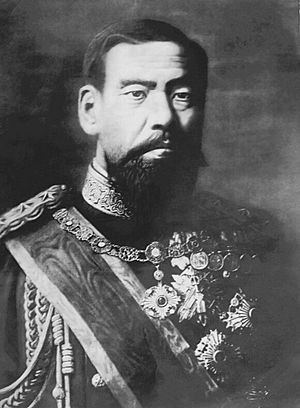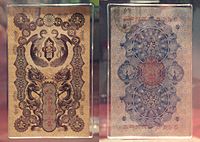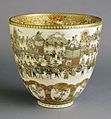Meiji period facts for kids

The Meiji period (明治時代 (Meiji-jidai)), also called the Meiji era, was an important time in Japanese history. It was a Japanese era name (年号,, nengō) that came after the Keiō era and before the Taishō era.
This period began in September 1868 and ended in July 1912. During these years, the emperor of Japan was Emperor Meiji (明治天皇). The name Meiji means "Enlightened Rule" or "Enlightened Government." This era was a time of big changes for Japan, as it moved from an old-fashioned country to a modern one.
Contents
Key Events of the Meiji Period
Many important things happened during the Meiji period while Emperor Meiji was in charge.
- 1868 (Meiji 1): The Meiji Restoration happened. This was a big change where the emperor gained more power. The capital city of Japan also moved from Kyoto to Tokyo.
- 1889-1890 (Meiji 22-23): Japan created its first modern rulebook, called the Constitution of the Empire of Japan. This set up a new government system.
- 1894-1895 (Meiji 27-28): Japan fought in the First Sino-Japanese War.
- 1904-1905 (Meiji 37-38): Japan fought in the Russo-Japanese War.
- July 30, 1912 (Meiji 45): Emperor Meiji passed away, and the Meiji period ended.
Leaders and Politics
During the Meiji period, Japan started having a Prime Minister. This person was the head of the government. Here are some of the people who served as Prime Minister during this time:
- 1885 (Meiji 18): Ito Hirobumi became Japan's first Prime Minister.
- 1888 (Meiji 21): Kuroda Kiyotaka became the second Prime Minister.
- 1889 (Meiji 22): Yamagata Aritomo became the third Prime Minister.
- 1891 (Meiji 24): Matsukata Masayoshi became the fourth Prime Minister.
- 1892 (Meiji 25): Ito Hirobumi became Prime Minister again.
- 1896 (Meiji 29): Matsukata Masayoshi became Prime Minister again.
- 1898 (Meiji 31): Ito Hirobumi became Prime Minister for the third time.
- 1898 (Meiji 31): Ōkuma Shigenobu became Prime Minister.
- 1898 (Meiji 31): Yamagata Aritomo became Prime Minister again.
- 1900 (Meiji 33): Ito Hirobumi became Prime Minister for the fourth time.
- 1901 (Meiji 34): Katsura Tarō became Prime Minister.
- 1906 (Meiji 39): Saionji Kinmochi became Prime Minister.
- 1908 (Meiji 41): Katsura Tarō became Prime Minister again.
- 1911 (Meiji 44): Saionji Kinmochi became Prime Minister again.
Gallery
-
The 15-year-old Emperor Meiji, moving from Kyoto to Tokyo, at the end of 1868.
-
The official start of the Meiji Constitution in 1889. This is a woodblock print by Toyohara Chikanobu.
-
The first one-yen banknote from the Meiji period, issued in 1871.
Related pages
Images for kids
-
Emperor Meiji in his fifties.
-
Ginza street in the 1880s.
-
The Hokkaidō Development Commission Sapporo Main Office (Historical Village of Hokkaido).
-
Tsuruma Park in 1910. Public parks, like Ueno Park, started to be created in 1873.
-
Japanese soldiers in front of Kankaimon gate at Shuri Castle during the Ryūkyū Disposition.
-
"Waves" maki-e panel by Shibata Zeshin, 1888-1890.
See also
 In Spanish: Era Meiji para niños
In Spanish: Era Meiji para niños























